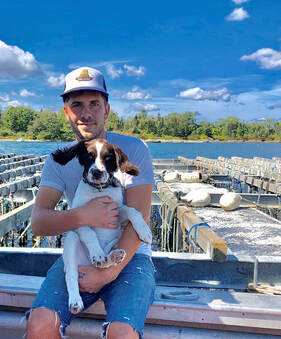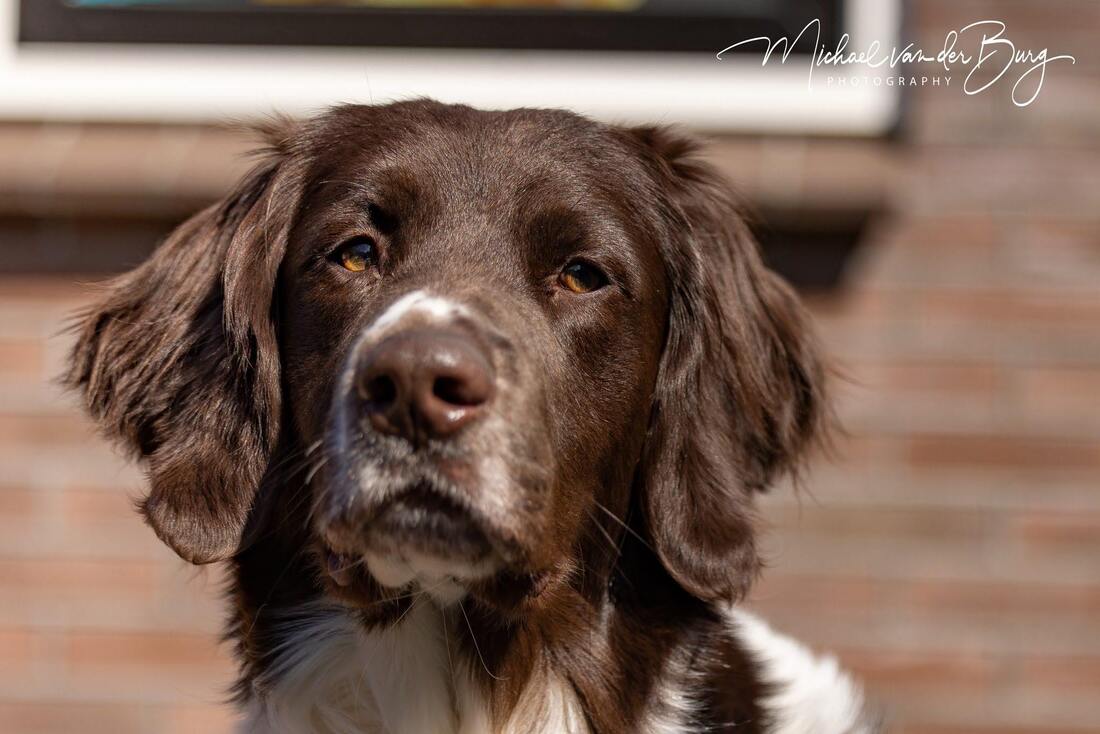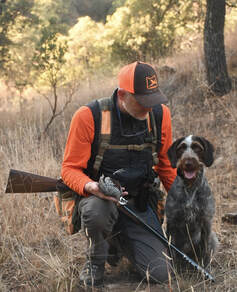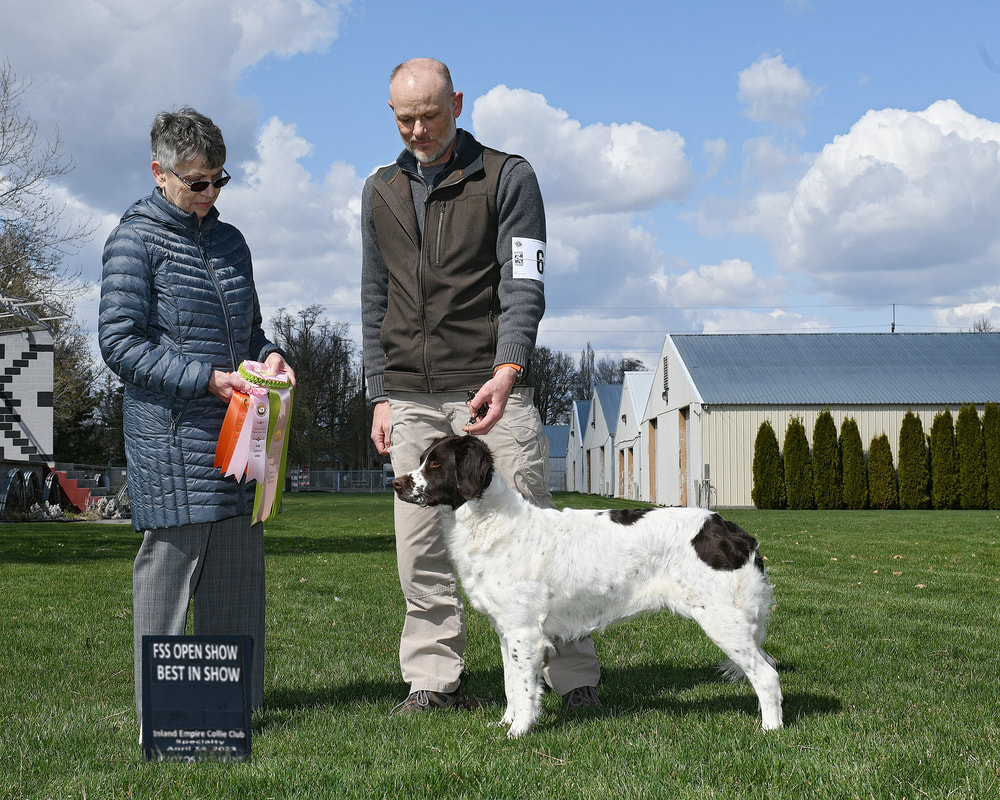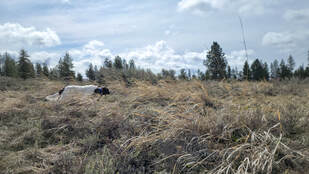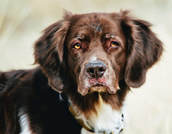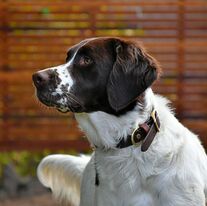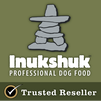With that all being said, what does it mean to you having a puppy or dog with a limited Registration? If you have no intent to show your dog in an AKC show ring or breed him/her, then it means very little as all performance events are open to you and there isn’t a negative impact with non-conformation AKC events, NAVHDA, IABCA or UKC participation.
What if you decide you would like to start participating in Open Shows and your puppy went home on a Limited? A Limited registration can always be changed to full later on if you decided you wanted to try the Open Show thing. You have to initiate the paperwork with us and the AKC will charge you what amounts to a nuance fee to make the change (currently $25). The only difference with limited is that you cannot show in open shows and puppies can't be registered out of the dog, but you still get the pedigree, registration number and all official documentation from the AKC. You can participate in every AKC non-conformation venue. What if you would like show and/or potentially breed and want those options open? Well that is between you and your breeder (us). For those wanting to show, there is a very easy solution -- we enter into a co-own arrangement with you. Co-ownership with us means that one of us goes on the AKC paperwork along with you. As far as the AKC goes, the only venue in which full registration is required is to enter Open Shows and win Certificate of Merit points. As mentioned, you can do AKC hunt tests and all the other titling sports without full registration. So for this, it allows our clients that want to show to have the ability to do so, while allowing us to manage rights regarding reproduction/breeding, to include mentoring when it comes time to find a partner for your dog. If breeding (or providing stud service) becomes something you would like to explore, we want to ensure the dog is what we hoped & expected, that the basic health testing has been accomplished (is passing) as well as hunt testing, and show ring exposure in particular if/when breeding (made available for stud) becomes something you would like to pursue. To help us with evaluation, with co-owns, we have a higher expectation of getting regular photos of the dog as it matures. Ultimately, there is no downside. For us, co-ownership doesn't involve any of your day to day with the dog. It only provides a method of having some say over what gets bred. We hope that all makes sense!
0 Comments
The breed standard of the Drentsche Patrijshond doesn’t state it outright, but the Drent is a “head breed”.
So, what does that mean, being a “head breed”? The details of the head are what defines a Drent. It is these details individually, and in summary that separates the Drent from the German Longhaired Pointer, Small Munsterlander, French Spaniel, or other somewhat similar white and brown piebald continental hunting dog from western Europe. Another element not mentioned in the breed standard that all true fanciers can and will go on and on about is the “expression of the Drent”. The expression of the Drent is the summary of all the details of the breed standard referencing the head; eye set, shape and color, ear set, muzzle length and proportion to skull, stop, nose bridge, and so forth all coming together in balance to create the classic look of the Drent; calm, warm, inviting and intelligent. A correct expression is defining of the Drentsche Patrijshond, much in the way that correct coat defines a German Wirehaired Pointer. Once you know what the correct expression of a Drent is, you cannot unsee it. Here is Bono Cooper v. d. Bezelhonk for reference.
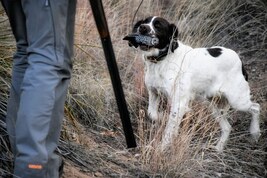 I learned that temperatures in the low 100’s for over a month straight caused any early season chicks to perish from exposure, since they would have been incapable of regulating their body temperature. Additionally, due to the high heat, hens will not lay eggs. Then there was the “heat dome” itself, which caused the vast majority of the much-needed monsoon storms to skirt around the areas most needing them to create food and cover. Then there is this other massive complication, the ranchers and the Forest Service itself. 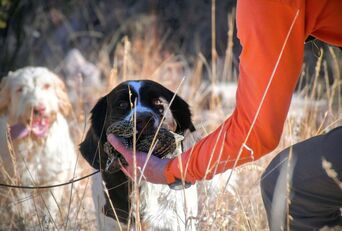 The winter rains of ‘22/’23 created a bumper crop of prairie grasses. It was incredible! So the ranchers brought in record numbers of cattle to eat all of this grass. In sixteen seasons of hunting the same region, I honestly can’t think of a time where I saw so many cattle. Then the heat dome sat in, and warded off the summer rains, aka monsoons. With that grass production halted and the huge herds acted like cancer of the prairie and consumed tens of thousands of acres of Forest Service land down to rocks and dirt. Many areas simply looked as if a bomb had gone off. The cattle were even eating young mesquite shoots, and old yucca leaves. It was surreal. Ranchers aren’t always the stewards of the land that they oft claim they are, and the U.S. Forest Service gets and F- for their management efforts. 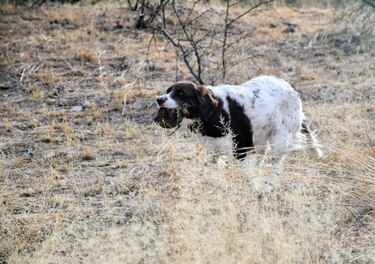 As you might imagine, it all made for a tough year for the quail. With ground cover either being non-existent or in fairly rough shape, the Mearns, famous for holding tight, were acting a lot like desert birds and running like track stars. It was hot, mid-70’s, no cloud cover, and no air movement. Basically, it was tough, but there were birds. Some areas coveys weren’t healthy, maybe two or three birds – no shooting, and we never went back. In other areas, coveys were healthy, the typical six to eight birds and in select places there were large coveys, twelve or more birds. The trick was to find places where the rain managed to sneak in, where the terrain and cover created cooler micro-climates where the birds could thrive. 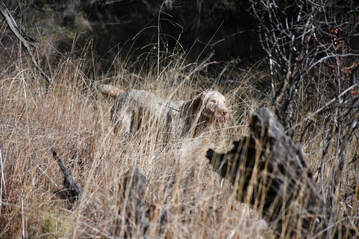 With all that being said, was it really that bad? Well sort of, but also not at all. Thankfully word got out, and the army of hunters who normally find their way to the region flagged off and went elsewhere. So, hunting pressure overall was much lighter, basically COVID levels. Still people figured out some of the bigger easier to get to areas and turned the screws, sadly decimating the quail populations that were there… We continued to explore new to us areas… We certainly found our share of birds and Ila turned out to be the hero of the trip. Despite tough conditions, she managed to come through over and over for us. Everyone else did well, and even little Rye started to figure out how to work in the hot, dry conditions.  In fact, the dogs did such good work overall, I had several days my shooting (hitting) was 100%! I don’t know that I’ve ever had a day of quail hunting where I hit everything, I shot at let alone several of such days! When the dog has the birds dead to rights, and you have the opportunity to walk up slowly and calmly, consider your shooting lanes, or on many cases, windows. Release the dog for the flush and pick your bird(s) in a quiet Zen state, wow, just wow. Of course, I had a few days I didn’t do so well, but that is rough shooting for you, and Mearns quail hunting is oftentimes some very rough shooting! All in all, we had a solid season, and made a few new friends. We can only hope the monsoons are good this coming summer, the ranchers scale their operations accordingly, and that the Forest Service does their job to protect the land. 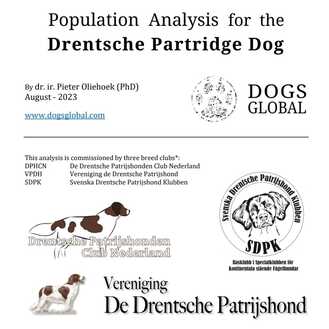 We are proud and excited to share with you Dr. Pieter Oliehoek's report on the Genetic Diversity of the Drentsche Patrijshond. The report was commissioned by three European Drent clubs (VDPH, DPHCN, and SDPK). Dr. Pieter Oliehoek manages Dogs Global and is recognized as a leading expert in genetic management of rare breeds, is now available to the public. Since my retirement from the Air Force in 2018, I dedicated myself to researching population management from the prospective of Zookeepers who manage breeding programs of endangered species kept in captivity, and to a lesser extent herd management practices of ranchers. Surprisingly, there are very few differences in approach - meaning many common threads abound! Here is what is really exciting about the report; first and foremost you do not need to be a scientist to read, process and understand the report. It was originally written in English and uses plain language. Two the concepts are not rocket science, perhaps, rather surprisingly common sense, and really don't require any "gymnastics" to execute. The report discusses all major challenges and the simple measures that would bring balance to each situation. In fact the report simply codifies what Jenna and I have been doing with our breeding programs and working towards achieving since we began collaborating on breeding Drents back in 2013! Hello friends! I realize I have been entirely derelict with making regular posts, and even getting the couple I promised finished and posted. I am still nibbling away at them - I promise. We took a year off from producing a litter for ourselves, to catch up on life and to do some things we had been meaning to do but couldn't because we had a litter on the ground. If you follow @TwoGunKennels or @Two_Gun_Kennels any, then you have a few ideas of what we have been up to...
One of the things we have been wanting to do is work on Ila's Certificate of Merit, as close to a Champion title a breed in the AKC's FSS can aspire to within that system (aside from multiple CM's). The preponderance of Open Shows in our region take place in the spring when she would have puppies on the ground. Even then, there just aren't many offered, and most are four or more hours away... The few remaining Open Shows are sporadically offered during the time she drops coat, and frankly looks her worst. We had a nice weekend at the Moses Lake show cluster where we all did well, with multiple group placements for all the dogs we had entered. However, Ila was given the opportunity to make history again! That's right, last summer, with a rough coat, she was the first female Drent to win a Best in Open Show (BIOC, Best in Open Conformation - yes, it is a bit confusing...), and as of Friday, 14 April 2023 she is the first female Drent to win multiple Best in Open Shows in AKC History! Another proud breeder moment: so far, our paternal line coming down from Esp. Ch. Joksan NABAR the Gloucester has produced all the AKC's Best in Open Show winners to date.
I got into birddogs later in life, but I have always been nutz about dogs, to include their training, learning, and later their conformation/structure, breeding and so on...
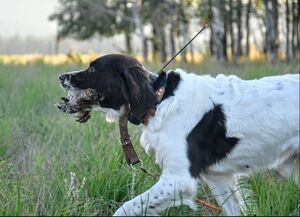
My Air Force career kept me from doing many of the things I wanted to do with my dogs. Long hours, working on my days off, deployments, travel, etc. A real sob story. So being able to do the "field work" I wanted to do with them was a far-off dream. These days, as long as things are working halfway decently, "playing with my dogs" is what I do.
Powder was initially trained by Dan Hoke of Dunfur kennels just outside of town. Dan is a GSP guy and has a field trail resume few can equal. Moreover, when Dan was a young fellow, he was an apprentice to Sigbot "Bodo" Winterhelt - The Bodo Winterhelt! Dan is a gifted dog handler for sure, and I will forever love watching him handle a dog I believe. He has a gift that is just magical! Still, he wasn't able to steady Powder up for whatever reason. 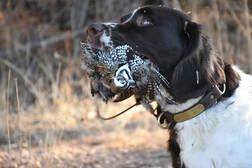
Powder has been a great companion to me. She is MY dog without question, and well in tune with me as one would hope (expect) from a Medical Alert Service Dog. In the field she has been a consistent producer, best yet she has become more proficient with each passing year. I have always wanted to do more with her steadiness for a long time now and this summer finally presented the opportunity I have been looking for!
This little video is kind of a big deal since Powder has spent most of her life treating gunfire in the field the same way Usain Bolt treated a starter's pistol sounding off! I had hoped to work on this last season, but she was injured, then pregnant, and went straight into hunting season just after the pup left. At 8 years of age, and only 4 dedicated training sessions for her this training season she now understands being steady to wing, shot, and release. So here we are, Team Hunting with Tule and Powder. This is their first co-session together. Tule did a great job of supporting Powder's initial point, so I gave her permission to come up and establish her own point, which she took advantage of. They worked well (even though Powder was a bit slippery as I walked in) and were nice and steady, overall, I'm really happy with them both. We use structure over force and high pressure. For her to demonstrate this level of steadiness with another dog in the mix is pretty awesome. by Mark Dinsmore of L'Etoile du Nord Kennels Editor’s Note Well maybe not, since I am borrowing this from a breeder I have followed for the past decade, and odds are he has been inspired by other serious breeders and maybe a serious client… So, these aren’t my words, but we do share sentiment on how many prospective clients give too many breeders (fill in the breed of your choice, this isn’t a Drent or Spinone specific thing) an easy pass. I have permission to post this and have made a few light edits, mostly grammar and format for readability since this was originally a multi-part post. I will identify any additional thought(s) I have added with (Ed.). So without further ado: One Breeder's Perspective There has been an explosion of people starting to have litters (most certainly since the pandemic, Ed.). So how do you know if they are knowledgeable and have dogs that are worthy of breeding? Frankly, you don’t and many are not. I have decided to give my perspective on what someone looking at getting a puppy should be looking for, and some of the questions you should be asking. Hunting I see a lot of people advertising puppies out of "Great" hunting parents. In fact, I don't think I have ever seen someone advertise anything less than that. Really? Every one of those dogs is a GREAT hunter. Says who? Sorry but reality is such that they all can't be great. Secondly, who is making that judgment? Questions that should be asked: First and foremost, can you go see the dog hunt? It is the old adage, seeing is believing. At a minimum, the breeder should be able to have a video for you to see of their dogs hunting. What are they hunting? Wild Birds? Pen raised birds. It does make a difference. Wild birds are by definition wild. They will not tolerate a dog that is a sloppy hunter. A dog pressures the bird too much, the bird leaves. A pen raised bird will often just sit there. It doesn't matter that the dog is inches from it, frankly it has very little survival instinct or skills, it has never needed them. I have often seen where someone has had to pick up the bird and throw it, to get it to maybe fly. Also, a dog often doesn't need to hunt to find birds that have been put out for it. It is just an Easter Egg hunt. I understand that it can be hard for some people to hunt wild birds, and hence hunt planted birds. I will say at least the dog is getting to see some birds, but please don't say it is a great hunter, as you have no way of knowing if that is true. How often do the dogs get to hunt? A couple of times a year for an hour or so? Doesn't really tell you much about the dog’s ability. To know just how good of a hunter a dog is, it needs to get out A LOT. It needs to hunt when the birds are plentiful, and more importantly when the birds are scarce. The truly great dogs will hunt all day to find that one bird, and not only will they be hunting, but they will also be hunting HARD. I would caution you to take what you hear about their dogs being great, with a grain of salt. Remember, it is one person's opinion. Ask hard questions. Training A bird dog is just that, a hunter of birds. But without training how can a dog rise to its true potential? Not all dogs are created equal. Training separates the wheat from the chaff. A Breeder needs to train their dog, before they can brag about how good they are. It is a question a prospective buyer should be asking. Training shows a breeder a number of things. Does the dog have the brain and mindset to be able to handle training? Training is stressful for dogs, just as it is for humans. Not all dogs can handle that. It shows how quickly a dog can adapt to new situations, and trust me, they must be able to adapt in the field while hunting. It shows what level of intelligence a dog has. Dogs are not robots; they must be able to think in the field and make decisions while they are hunting. They must be able to learn where birds are likely to be. Training also shows biddability, the willingness to work with you. So, your dog is a "Natural" and doesn't need to be trained. Sorry but NOPE. No one can tell me their dog wouldn't be better without training, not to mention without training you are not able evaluate to the afford mentioned comments on training. Case in point. Many of you have probably heard of a dog by the name of Vernon de L'Escarbot. Vern was a "Natural" at 4 months of age. He ran the field well, quartering, and always turning into the wind. He found and pointed birds and was staunch. He retrieved to hand starting with his first ever shot bird. Did he need to be trained. ABSOLUTELY. He would never have achieved the heights without the training, plus I would have not known just how good he truly was. ALL dogs will benefit from training. When asking a breeder how well their dogs are trained, don't accept them saying they are "Naturals", frankly in my opinion that is just a copout. So, you are not as lucky as I am to live in the country with wide open tracts of land to run on, nor birds to train with. Send the dog out to a trainer. How can you say it is too expensive to do that, if you are making money selling the puppies out of those dogs? There are things I can't do training wise. Right now, I have a young dog with a trainer to be trained to be handled off a horse. I don't have a horse at this time, so I can't train him. I went online, posted what I was looking for, Found, met with and dropped off Styx for training with the trainer, all in less than 24 hours. (We too needed a trainer with a horse, we did our own search, made the appointment, and was part of the training event. We did what was needed to ensure our dog was set up for success. It was a super cool afternoon to boot, Ed.). A reputable trainer will have trained the dogs they are breeding. That doesn't mean they have to fully broke, but they need to go through some level of formal training to learn their strengths and weaknesses, and suitability for breeding. Knowledge of the breed A reputable breeder should possess a good amount of knowledge of the breed. It doesn’t mean they have to know everything, but they should have a good grasp on many subjects. At a minimum: A breeder should know the history of the breed. What the conformation standard of the breed is and where their dogs fit in that. They should be able to articulate why their dogs are in standard and not just say they are in standard. Be able to list strengths and more importantly weaknesses, and EVERY DOG has weaknesses. What the working standard of the breed is, meaning how they are supposed to hunt, and not simply say their dogs are good or great hunters. Every single one says they have good or great hunters. Do you really think every dog is great? They should be able to tell you exactly why they are great, based on the working standard, not based on what their opinion is. Sadly, most people don’t know how the dogs are supposed to hunt. A breeder should know the lineage of their dogs, not just say they are great lines, but rather why they are great lines and what the titles mean. I am amazed when someone says they are “Champion lines” but then don’t even know what the titles mean and the requirements to achieve them. Always remember a pedigree is just a piece of paper. Too many people just breed dogs based that piece of paper, not based on the actual dog. Remember, you are buying a dog, not a piece of paper! Do your due diligence and ask questions. A reputable breeder wants questions (Ed.). If they can’t answer your questions or give you vague answers, is that what you want? I suspect you aren’t looking for a vague dog. Conformation, aka the breed standard. What is conformation, and what does it have to do with the breed standard? Is it important? The simple answer to the second question is a resounding YES!! A breed standard is how we define a dog breed. It lists out the attributes a dog is supposed to have to be considered a particular breed. Without breed standards, simply put, we don't have individual dog breeds. Surprisingly, and more so, sadly, a lot of people breeding dogs don't think it is that big of a deal. SERIOUSLY??!! All they care about is function in the field (or some other narrow band of traits, Ed.). That is a ridiculous assertion. A breed standard dictates how a dog moves in the field and hunts (and quite possibly much more depending upon the breed and its standard, Ed.). If a dog is out of standard, it may not run properly, and that leads to decreased stamina, and wear on the dog's joints. Which can lead to increased (number of and severity of, Ed.) injuries and shorten the hunting career of a dog. In this regard a breed standard is vitally important. Conformation is how well a dog adheres to the breed standard. No dog is perfect, let me repeat that, NO DOG IS PERFECT! All dogs have areas where they are weaker, as well as areas where they are stronger. In France, I don't know about the rest of Europe, to be registered a dog must go in front of a Conformateur, after the age of one. If they don't meet a minimum standard, they cannot be registered. (This is not common in Europe, I've shown dogs in the Netherlands, Spain and Portugal, but I see a tremendous amount of value in such a system. The Dutch have Breeder's Day where mated pairs of dogs are invited to be shown with their offspring as a unit and individually in an effort to gauge the success of creating the next generation of Drents. This is an ideal time to learn about the breed, Ed.). In the show ring dogs are rated, Excellent, Very Good, Good, Insufficient. At the CEB-US dogs are given a written evaluation so a breeder can know the strengths and weaknesses of their dogs (At Breeder's Day and other similarly formatted shows Drents are given a detailed written evaluation much in the same way, Ed.). Remember, the evaluation is only as good as the Judge (italics, Ed.), so things do have to be taken with a grain of salt (No truer words have been spoken or written! Ed.). They don't always get an expert for the breed to do it, and yes that can make a difference. (In North America there are no qualified judges for the Drent, and for the Spinone not all approved judges are well versed in the breed standard oftentimes selecting a few elements and hanging the whole enchilada on that versus a balanced approach...but I digress. In short don't rely on a judge to be the one to tell you about your dog - learn the breed, what's right and what's not, Ed.). How does this all apply to breeding, you ask? Well, if you don't know the weaknesses of your dog, how can you improve it? Knowledge is power, the more knowledge you have of your breeding dog, the better decision(s) you can make when it comes to pairing dogs. One of the purposes of breeding is to better the breed, you need that knowledge to be able to attempt to do that. Sadly, right now, as far as I can tell, the purpose of a lot of people breeding dogs is to make some money (Breeding dogs to make money in my experience is laughable, Ed.). It is not a bad thing to make money, but it is a bad thing if you don't really know anything about the breed or the dogs you are using, because then you are only doing it to (try to, Ed.) make money. Remember, you should also be trying to better the breed. Without a doubt some breeders have a lot of knowledge about the breed, but sadly most do not. Try asking the breeder you are talking to, "Where are your dogs lacking?" I would be willing to bet you will be greeted with a pause, if you even get an answer at all, and then a response that says their dogs have great conformation, or something like that. That is not an answer to what you asked. I can tell you the strengths of all my dogs, and more importantly the weaknesses, any breeder should be able to do that (we can as well and happily bore you to tears talking each dog's ups and downs, Ed.). Remember, knowledge is power.
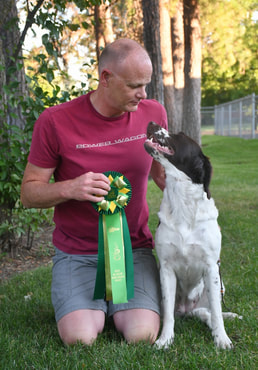 Last weekend I had the pleasure of participating in my first ever IABCA Show with Ila. The IABCA has a unique format where they limit the number of entries, so each exhibitor gets some one-on-one time with the judge. Also, the judge will provide a limited written critique on your dog against its breed standard. Judges are both foreign and domestic, some are new, others may have quite the resume! The IABCA format allows you to show your dog a lot, if you signed up for everything that your dog is eligible for. Our two days were composed of four shows, two each day! Judges evaluate an entire Group, e.g. Sporting group, one breed at a time, then judge the group as a whole. With a brief lunch break, Groups are rotated to a new judge and then you show again. At the end of the day the first show gets all its "Best in Show" dogs run, then the second show follows soon after. It makes for a full day of dog showing! On day two, with shows three and four, everyone is rotated again, so your dog gets seen by a new judge. The only difference is there will be a few special categories run, and then at the very end any dog who earned a Best in Show placement from any of the preceding shows can compete to see who won the whole enchilada! 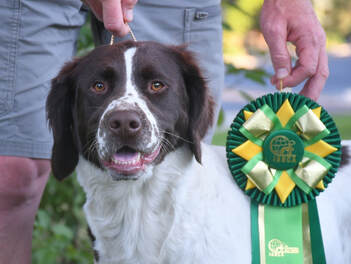 For a rare breed there is no other way to build that much ring time! In all Ila was shown seven times on each day (in the blazing heat I might add) and should have been shown at the final event, but I was unaware of her eligibility to do so. The IABCA has multiple categories which are treated as their own individual show. I find this to be interesting, and depending on your situation, you can enter your dog under multiple categories and squeak out an extra show and the possibility to win! The downside for a rare breed like the Drent (or super low entry breed like the Spinone), just as in conventional showing (AKC or UKC), judges truly have little or no knowledge of your breed. Most assuredly they have not taken Judge's Education for the breed! Sure, they have the breed standard at their side, but that alone isn't sufficient to make a full and legitimate judgement. Of interest Ila's judges stuck to what they knew - movement. Then quickly perused the standard and went back over certain aspects of her during the write up phase to see if she matched what they believed they had read. All in all, most observations made were pretty good, and mostly accurate. There were a few observations that were a bit comical. For example, one judge would have liked to see Ila with more muscle! In reality, she is the most well-muscled female Drent I have ever seen. She has surpassed her mother in that department, which is saying something. I'm not sure what she was expecting, but I took a moment to explain to the judge that Ila was a hoss for her breed. The other item that sticks out at the moment is the judge would have liked to seen more hair on Ila's ears... I of course explained to her that what she was seeing was a correctly groomed Drent, and that Drents with shaggy ears were in fact ungroomed savages living at the local homeless camp - this got a lot of laughter from her. 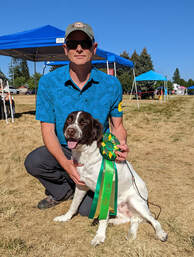 In principle you show your dog like you would at any other dog show, but you get face time with the judge and a critique. Dogs are rated on a scale of three to one (one being the best) on their overall conformation to the breed standard. The judge can grade some, all, or none the top grade and so on. Still there will be only one winner from each breed, with placements of first through third... At the group level, be it "Bred by" or regular, Dogs can be placed first through third with the first-place winner being able to go on to compete in the Best in Show. There are more classes to compete in, and each class is treated as its own show, and consequently there are more opportunities to win rosettes at the end of the day. If your dog receives good grades, you can apply for IABCA titles. If anything, this is the one area the IABCA could be more protective of. The number of top grades needed is surprisingly low. If you have a nice dog, odds are it will grade well enough, and therefore become eligible in short order for a title. It then should go without explanation, Ila qualified for her International Champion title, and only needs one more point for her second IABCA title. The titles are not what will bring me back though. Overall, the shows were well organized and ran efficiently. Their group awards, little medallions, are a tad outdated/silly. But their Best in Show rosettes are quite nice. For me it will be the ability to put my dog in the ring and have fun talking about her and educating others about her breed. There were plenty of people excited to see and pet their first Drent! |
Categories
All
Our YouTube Content
Two GunI'm just a guy suffering with an infatuation with gundogs since childhood. Forty some years later this is what you get. Archives
July 2024
|
|
|
